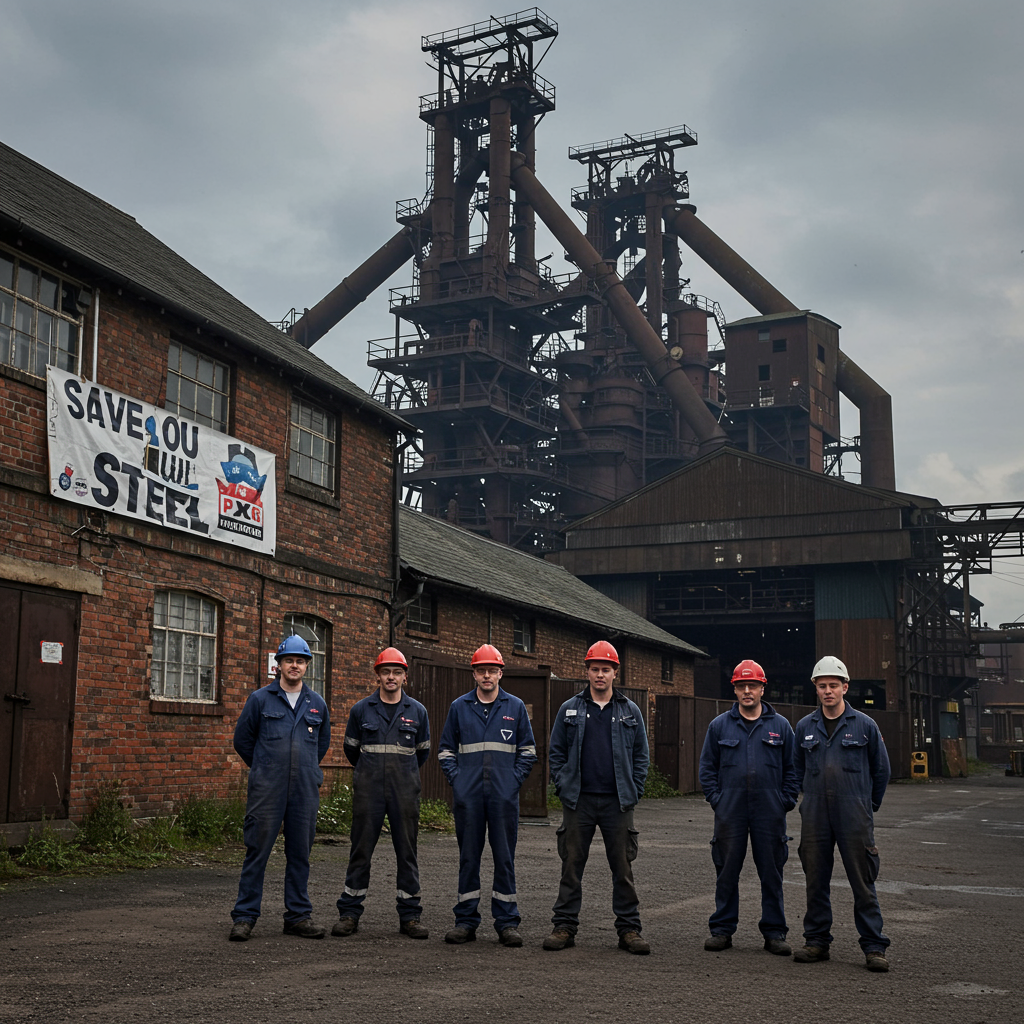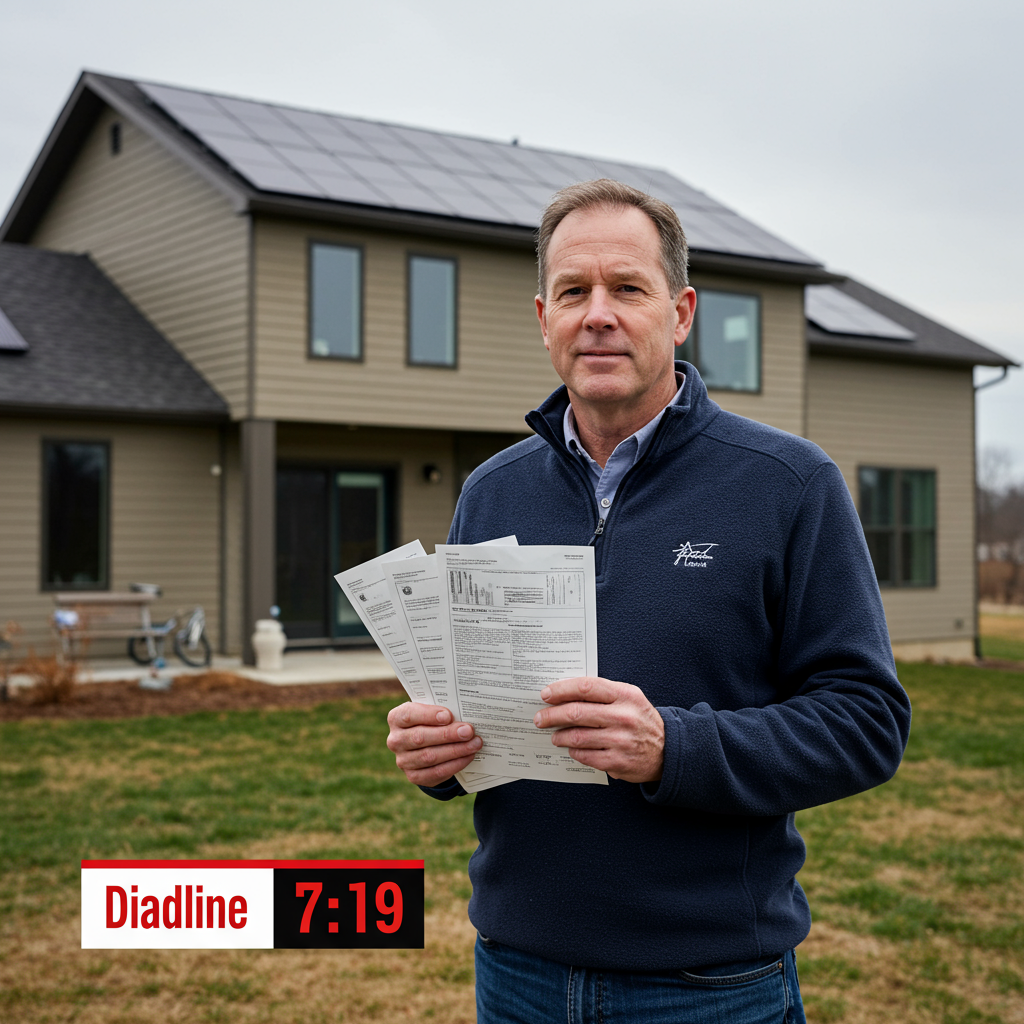The UK steel industry, a shadow of its former self, faces yet another critical juncture. Decades of decline have shrunk production and jobs, leaving a handful of historic towns wrestling with their identity. Now, fresh uncertainty hangs over these communities as the prospect of significant US tariffs casts a long shadow. This potential trade barrier joins existing pressures like high energy costs, compounding fears for the future of British steelmaking.
A Steel Heart Under Pressure: The Human Story of Decline
For generations, towns like Port Talbot in South Wales pulsed with the rhythm of steel production. Men and women built their lives around the vast works, their identity tied to the clanging metal and intense heat. Ryan Davies, a steelworker for 33 years, remembers a constant undercurrent of closure rumors, often dismissed with a “pinch of salt.” The job was demanding, requiring 12-hour shifts amidst the noise and risk. Yet, it provided a sense of purpose and security.
That changed dramatically in recent years. Rumors turned to reality for Davies and thousands of others. Tata Steel, owner of the Port Talbot plant, announced a major restructure. This involved shutting down the site’s two remaining blast furnaces.
The End of an Era: Blast Furnaces Fall Silent
In September 2024, the last blast furnace at Port Talbot was switched off. This marked the end of over a century of virgin steel production in the town. The restructuring plans are set to eliminate around 2,500 jobs, significantly impacting the local workforce. For Davies, who took voluntary redundancy, it felt like “the end of it all.” Now 51, he faces an uncertain personal future while deeply worrying about the town he calls home.
Port Talbot’s skyline remains dominated by the iconic bronze-coloured chimneys, a stark visual reminder of its industrial past. Steel wasn’t just a business; it was, as Davies puts it, “the whole reason Port Talbot was ever a successful town.” This story is echoed across other British communities historically reliant on steel, including Redcar in North Yorkshire and Scunthorpe in Lincolnshire.
From Global Giant to Fading Footprint
At its peak around 1970, the UK steel industry was a global powerhouse. It employed over 320,000 people and produced more than 26 million tonnes of steel annually. The decline since then has been steep. Today, fewer than 40,000 people work in the sector, producing only around four million tonnes a year.
Several factors contributed to this contraction. The rise of cheaper imports, particularly from China, intensified competition. The broader shift in the UK economy from manufacturing towards a service-based model also left traditional industrial towns struggling to adapt.
The Perfect Storm: Energy Costs and Global Competition
In recent years, the challenges have mounted. High energy prices in the UK disproportionately affect energy-intensive industries like steel. Heating massive furnaces requires significant power, making UK-produced steel more expensive compared to competitors in countries with lower energy costs.
Analysts also point to the UK’s drive towards decarbonisation as a factor raising costs for producers in the short term, although it offers potential long-term benefits. Against this backdrop of structural challenges and rising operating costs, global trade dynamics take on added significance.
The Tariff Hammer: Trump’s Persistent Threat
Among the most immediate concerns is the ongoing uncertainty surrounding US tariffs on steel exports. While the UK managed to secure reductions or elimination of tariffs on other goods like cars and aerospace products, a 25% tariff on UK steel and aluminium exports to the US remains in place.
This persistent tariff makes British steel less competitive in the large US market. It has reportedly frayed nerves and cost UK steel companies valuable orders. British officials have been determined to get the 25% tariff reduced to zero, and talks have been ongoing. However, reaching a final agreement has proven difficult.
Sticking Points and US Concerns
Two main issues have held up a zero-tariff deal for UK steel. Firstly, US trade negotiators are reportedly overwhelmed with simultaneous negotiations with many trading partners. This simply slows down the process.
Secondly, and more specifically for steel, there are concerns in the US regarding Tata Steel’s operations in Port Talbot. With the closure of its blast furnaces, the plant no longer produces virgin steel from raw ore. Instead, it imports semi-finished steel slabs from India for further processing and finishing in the UK. This shift has led some in the US to question whether the output truly qualifies as “UK steel,” complicating tariff negotiations.
Broader Tariff Context and Looming Deadlines
The uncertainty surrounding UK steel tariffs is set against the backdrop of former President Trump’s broader, aggressive stance on trade and tariffs. Trump has openly pursued a policy of imposing significant import duties on goods from numerous countries. Recent announcements include intentions for substantial tariffs on goods from Canada, Mexico, and the European Union, with many proposed to take effect around the end of July or August 1st, 2025.
Trump’s administration has signalled tariffs as high as 50% on certain imports, including copper, critical for infrastructure and military uses. While the UK was thankfully exempted from a recent surprise hike on steel tariffs to 50% that affected some others, the threat of high tariffs remains a key feature of this administration’s trade policy. Even if a zero-tariff deal is eventually agreed for UK steel, it is likely to include quotas. This means tariff-free access would only apply up to a certain volume, putting a ceiling on potential future export growth to the US market.
A Glimpse into the Future: Redcar’s Transition
To see what a post-steel future might look like, many look to Redcar on the northeast coast. This area, sometimes called Britain’s “rust belt,” is dotted with derelict industrial sites. Teesside’s steel industry had a proud history, even providing steel for the iconic Sydney Harbour Bridge. But it suffered greatly in the latter half of the 20th century.
Redcar’s major steelworks closed in 2015. This closure led to around 2,000 direct job losses, with thousands more affected in the wider supply chain and local economy. Former steelworkers faced difficult transitions. A council task force helped many find new employment, but often at significantly lower salaries and in jobs unrelated to their industrial skills. Stories emerged of former steelworkers becoming dog walkers, decorators, or chimney sweeps.
Redevelopment and Challenges
The vast, derelict land that once housed Redcar’s steel plant is now the focus of an ambitious redevelopment project called Teesworks. The aim is to transform the site for new industries, particularly renewable energy and carbon capture technology. Developers hope to create 20,000 jobs in total, having already reported creating over 2,000 long-term roles.
However, the Teesworks project has faced scrutiny. A central government review highlighted “inappropriate decisions” and a “lack of transparency.” Questions were raised about how private developers acquired significant portions of the site. Despite these challenges, proponents, like Tees Valley Mayor Lord Houchen, emphasize the billions in investment the project is bringing to the region.
Scunthorpe’s Struggle for Survival
Scunthorpe faces its own precarious future. It is currently the last place in the UK where virgin steel is made from melting iron ore in blast furnaces. The site has endured repeated crises. After receiving £600 million in taxpayer support, it was sold to Chinese company Jingye.
Recently, however, the site returned to government control. The government had to step in after Jingye reportedly failed to order vital supplies needed to keep the furnaces operational. Scunthorpe’s future remains uncertain. Some advocate for full nationalisation of the site, but analysts warn of potentially huge costs and complications. Finding a new private buyer is also challenging, given the UK’s high energy costs and the complexities of decarbonisation. As one resident put it, there is a fear the town could become another steel “ghost town.”
The Big Debate: Steel’s Future or a New Path?
The difficult situations in these towns highlight a profound question: in a post-industrial age, what is their purpose? Should they desperately try to cling to a dying steel trade, or pivot entirely to new industries of the future?
Trade unions, like the Community Union representing steelworkers, argue strongly for investing in a new, green steel industry. They believe that with the right support and technology, a cleaner form of steel production can emerge, securing the future of steel towns. The idea of Port Talbot without any steelworkers is “unthinkable” to some.
Others view this perspective as overly romantic. Paul Swinney from the Centre for Cities think tank argues that focusing on recreating traditional “good jobs” in heavy industry is unrealistic. He believes the UK economy has changed fundamentally and that there is “no plausible route forward” that will bring back large numbers of these kinds of jobs.
Pivoting to a New Reality
Swinney suggests towns like Port Talbot and Redcar should instead look towards white-collar, knowledge economy jobs, similar to those that have brought prosperity to many city centres. This would require improving transport links to cities and addressing the challenge of lower formal qualifications among working-age adults in steel towns compared to the national average. Former steelworkers themselves acknowledge the radical difference between factory work and office environments, highlighting the difficulty of a seamless transition.
However, the transition is already beginning. The groundbreaking ceremony for Port Talbot’s new electric arc furnace in July 2025 marked a tangible step towards a different future for steel in the town. This £1.25 billion project, backed by £500 million in government funding, aims to drastically cut carbon emissions by processing scrap steel rather than iron ore. It’s a move described by union leaders as “bittersweet,” acknowledging the job losses but seeing it as securing “a future for Port Talbot steelmaking.”
Rays of Hope and Lingering Fears
Despite the immense challenges, some potential sources of optimism exist. Increased government spending on defence, a steel-intensive sector, could boost demand for UK steel. Furthermore, the UK’s decarbonisation efforts could eventually work in the industry’s favour. As investment in green energy grows, so does the demand for high-quality steel needed for components like wind turbines. This could, in theory, create a “virtuous spiral” where green energy lowers overall energy prices, benefiting steel producers.
Yet, caution remains. Gareth Stace of UK Steel warns of a “worst case” scenario – a “slow death” where the industry continues to shrink gradually. He advocates for tailored policies, including action on high energy prices and government procurement policies that prioritize UK-produced steel.
Ultimately, the fate of these historic steel towns and the future of the UK steel industry remain uncertain. They are caught between a legacy of heavy industry, the pressures of a globalized economy, the immediate threat of trade barriers like US tariffs, and the complex, sometimes painful, transition towards a different future. Success will depend on a blend of national policy, global markets, and the resilience and adaptability of the communities themselves.
Frequently Asked Questions
What is causing the recent difficulties for the UK steel industry?
Recent challenges stem from several factors beyond the decades-long decline. High energy prices in the UK make production more expensive. The ongoing uncertainty and imposition of US tariffs on steel exports harm competitiveness and cost orders. Additionally, the shift towards decarbonisation, while necessary long-term, adds costs in the short term.
How are US tariffs specifically impacting UK steel?
Currently, a 25% US tariff applies to UK steel exports. This makes British steel more expensive for American buyers compared to competitors. While the UK avoided a recent hike to 50%, a deal to lower the tariff to zero has stalled. This is partly due to negotiation volume but also US concerns that Tata Steel in Port Talbot, now importing steel slabs rather than melting ore, may not meet criteria for tariff-free access, even if a deal is struck, it may include export quotas.
What is the plan for Port Talbot’s steelworks after the blast furnace closures?
Tata Steel is transitioning the Port Talbot plant towards electric arc furnace (EAF) technology. A groundbreaking ceremony for a new EAF took place in July 2025. This £1.25 billion project, supported by £500 million in government funding, will process scrap steel and is expected to reduce carbon emissions by 90%. While leading to significant job losses (around 2,500), the aim is to secure a long-term, greener future for steelmaking in the town, albeit on a different model than the historical process.




